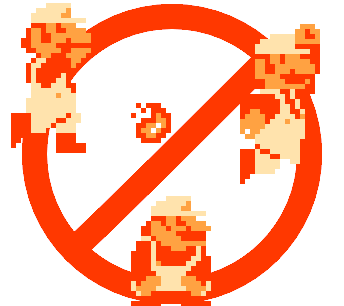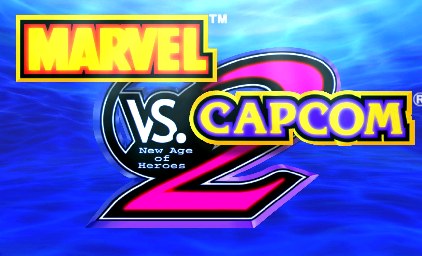The Coefficient of Clean pt.1
 Saturday, February 5, 2011 at 4:46PM
Saturday, February 5, 2011 at 4:46PM I'm something of a neat freak when it comes to cleanliness. This has nothing to do with sanitation or a tidy workspace. I use the term clean as a direct contrast to cluttered, and it's a term that refers to communication. Not with words or sentences. Think animation, presentation, and experimentation. If form-fits-function is an immensely important design philosophy that mainly applies to the visual and mechanic level of game design, then cleanliness works much in the same way while encompassing emergent gameplay.
Clean is better than dirty (cluttered).
Video games are complicated. From the moment you first pick up the controller, mouse, keyboard, stylus, balance board, mic, drum sticks, phone, pad, or stand in the appropriate camera zone (wow, we've come so far) you begin a learning process. Slowly you'll learn the gameplay complexities (rules) whether by reading instructions, an interactive tutorial, or trial and error. Since sight dominates our sensory impressions (about 80%) video games use visuals most of all to communicate.
In a second so much information can be convey with visuals alone. And in that same second, there can be countless interactions happening off screen that are not being conveyed through visuals. This all depends on the game, of course. In general humans can only think so much (STM) see so much (reflex) and do so much (dexterity) in a short period of time. In other words, we are easily overwhelmed, overloaded, and overstimulated. Clean design understands these limitations to create a balanced information flow between the game and the player.
Clean design starts with mechanics design. In this article series, we'll examine cancels, simultaneous actions, feedback, action frequency, emergent-behavior-fits-fiction, arbitrary limitations, static-space, and excessive complexities to understanad how design decisions can create clean or cluttered games.
Cancels
A cancel is a term that refers to the ability for a player mechanic or a player input to force a state change of a gameplay element from a non-continuous state. What does this mean exactly? A cancel is a tricky term to pin down because all state changes are like cancels. When Mario is in a "stand" state just hitting left/right changes him into a "walk" state. From a stand, walk, run, or duck state you can change into a jumping state. But basic character movement is not what we mean when we use the term "cancel." What we think of are 2-in-1s in the Street Fighter series that instantly change from one move into another after making contact with an opponent. We think of Z/L-canceling from the Super Smash Brothers games to cut the recovery animation lag down to nearly nothing. We think of how nearly every move in Marvel vs Capcom 2 cancels into another for insane combos.
To hone the definition so that it's not too general, I added the part about non-continuous states. Mario can stand, walk, duck, and run indefinitely assuming there are no pits/obstacles in his way and ignoring the stage time limit. This quality makes these states continuous. In other words, these states will continue without a break until you do something about it. But when you JUMP, the jumping state will naturally come to an end when you land on a platform, the ground, or fall in a pit. Upon landing Mario will automatically convert into a run, walk, stand, or duck state. According to the game engine, the vertical fall distance has a clear limit. Perhaps a better example is with an attack like Mario's fireballs. When you hit the B button, Mario throws a fire ball and then reverts to a stand/walk/run/jump state. The move naturally wraps itself up.

Designing which states can change into which states is the foundation of the feel and fiction of virtual interactivity. When the right states flow into each other, we think nothing off it like with Super Mario Bros. When Mario is throwing a fire ball, he cannot cancel the animation into a DUCK. But he can JUMP during this time. If you look closely the reason is clear. Mario DUCKs by grabbing his legs (see image above). So while throwing a fire ball, his hands are occupied making it difficult to use them to DUCK. But Mario can JUMP while throwing a fire ball because these two actions do not use the same limbs. For reasons like this, state/cancel design is closely related to a game's fiction. I'll go over this concept in greater detail later in this series.
Mechanics state/cancel design can also create a hierarchy or priority of actions. In Halo, reloading animations can be canceled with a melee attack, grenade, or shooting. With this design, you're never too limited while reloading. But when you throw a grenade or melee you're stuck in that state until the animation times out. This design naturally influences players to grenade/melee carefully and shoot/reload more freely.
Careful When Designing Cancels
If cancels aren't designed very carefully, the believability of the forms/functions can be hampered. One type of cancel that I generally dislike is when offensive moves can be canceled into defensive moves. The Ninja Gaiden series, Bayonetta, God of War series, some Castlevania games, and Shantae: Risky's Revenge are all games that feature an offense-to-defense cancel. While attacking, you can hit a button to instantly stop the move and convert into some kind of defensive maneuver. Some games do a better job balancing the combat with such cancels better than others. But on the mechanical level, before the gameplay emerges, offense-to-defense cancels have a negative effect on a games design, I feel.
Poor cancel design creates problems for the depth of combat. Basically combat is the functional fight between opposing sides or elements. What drives and defines combat is interplay (counters). Games that feature 2D or 3D space as a core dynamic and fighting moves that sweep through this space in real time inherently have natural counters as the foundation and bulk of the interplay. Because natural counters depend on how attacks move through space, fighting moves are generally designed with a familiar mechanical balancing formula in mind. The quicker the move, the weaker the damage. The longer the wind up the stronger the attack. So on and so forth. We intuitively understand this kind of balance because of the relationship between speed, force, momentum, inertia, and mass in real life.
So when the mechanics of a game are designed to allow players to cancel a move's natural cycle of startup, active, and recovery animations to just startup and part of the active frames, half the move and most of the drawbacks can be cut. It's easy to see that what makes combat interesting, and gameplay in general, is what's commonly referred to as "interesting choices," a term coined by Sid Meier. When players have to pick from moves that have advantages and disadvantages where no one move is obviously the best (dominant strategy), then these choices reflect the players individuality rather than their ability to recognize the single best way to play. Are you the kind of player that sacrifices strength for speed? Do you pick power over maneuverability? Do you prefer an all-around type option? Limitations and drawbacks are a key part of what makes games interesting. So if cancels remove natural drawbacks from moves (recovery times), then the entire combat system is stressed. Exactly how a game is stress must be taken on a case-by-case basis, which is an article for another day.
The more extreme the cancel system in a game, the more the functions of the cancelable moves will overlap and blend together. This is really an issue of design space. The greater the design space of a game, the more unique each move can be. The more unique/nuanced properties (complexities) a move has the more potential there is for the move to have multiple uses (some obvious, others less so) as the emergent metagame develops. Such a design makes these moves more interesting (varied choices/application wise).

Take a game like Marvel Vs Capcom 2 or 3, for example. The ability for most characters to cancel most moves into more moves/supers, and then cancel supers into tag-in-supers are what make the cancel design of this game extreme. On the basic level, all the combos look very similar. The target's body seems to flop around for the "ride" as the attacker unleashes attacks that seem to keep the opponent going. Fortunately for fans, the metagame for MvC2 has developed beyond these drawbacks to where big combos and super cancels are the bread and butter of strategies. The downsides to such an extreme design will be expressed later in this series. For now I'll say that MvC2 isn't any deeper for having such a cancel design.
In part 2 I'll cover simultaneous actions.


Reader Comments (4)
One thing a like a lot about this blog is that it never gets caught up in the vagueness of fun. A lot of other bloggers seem afraid to even approach why certain game styles work or don't work, as though it'll make them seem tyrannical with their opinions. They envelop everything under a "preference" umbrella, which to me seems like a safe and easy out, lacking of any real critical insight and relegating observations to the bland and obvious.
So I find it very refreshing when you make the concrete claim that "On a fundamental level, certain game styles don't work all that well, and my reasoning here is objective, not personal opinion."
Also a little side note, Resident Evil 5 is really the only action game I find interesting this generation specifically because of the choices you have to make between moving and attacking. Which I think parallels your point about weighing the advantages and disadvantages of every action.
Anyway, clean design is an aspect of gaming that I find very interesting. I'm really looking forward to reading the rest of this series.
@Slampire
You just made my day! And so well put too.
I take great care to organize and articulate my ideas so that I even don't give opinions without some kind of support. I'm glad it's appreciated.
Speaking of RE5, you're going to love my next post.
Stay tuned. I anticipate your future thoughts.
I note an amusing similarity between the "timed attacks" mentioned in this article and the Attack-Decay-Sustain-Release mechanics of volume envelopes in synthetisers ^_^
@PypeBros
Ooooo. Interesting. Do explain more if you have the time.